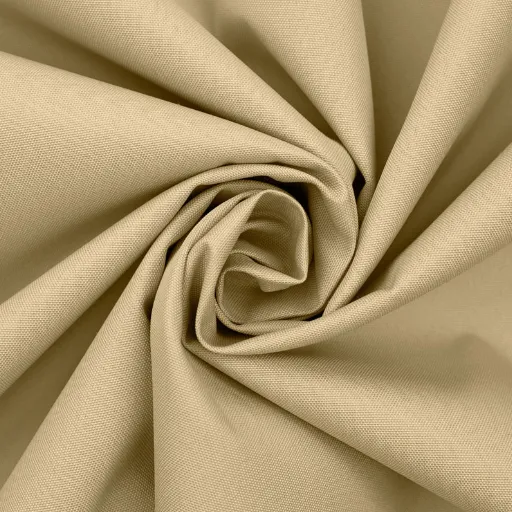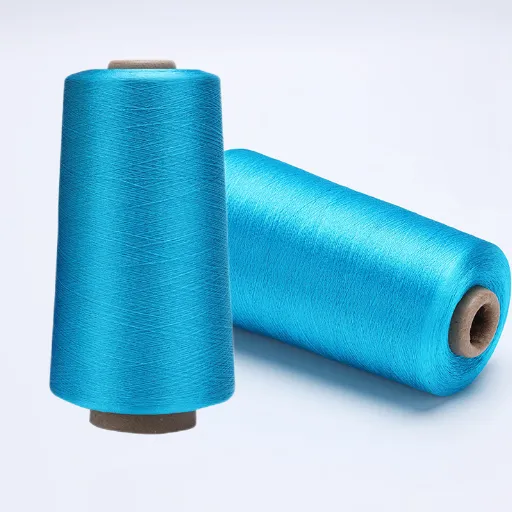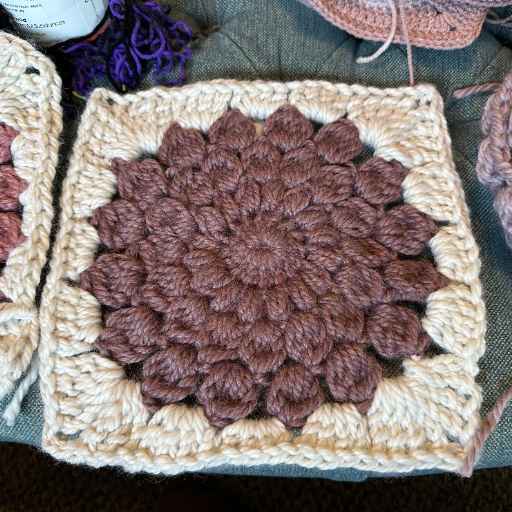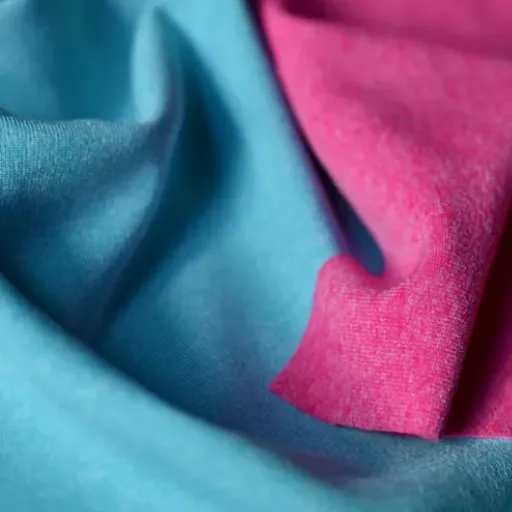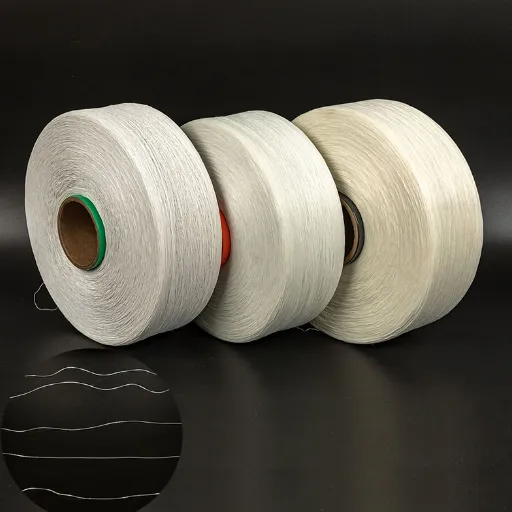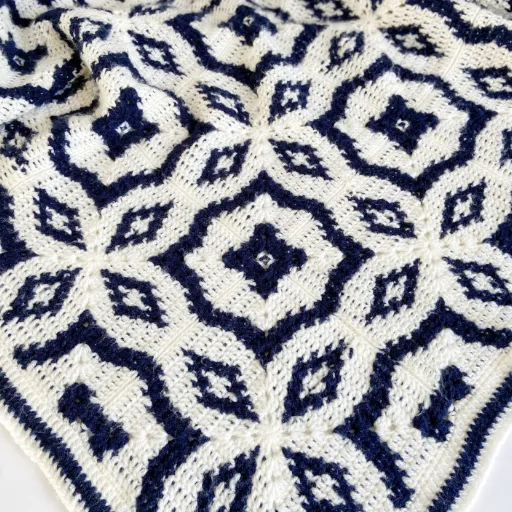When deciding on the correct fabric for apparel, covering, or outdoor equipment, the choice of materials is usually more important than you think. Among the different types of fabrics, acrylic and polyester frequently emerge as the most excellent and most used options. However, what makes them different? Knowing the differences between acrylic and polyester fabrics is a must for the gathering of information whether you are looking for durability, comfort, or usability. This blog takes you through the main differences between the two synthetic fabrics, and explores their distinct properties, applications, and advantages. By the time you finish this article, you will know very well which fabric is the most appropriate for your particular requirements, thus allowing your next fabric selection to be a sure one!
Understanding Acrylic and Polyester Fabrics
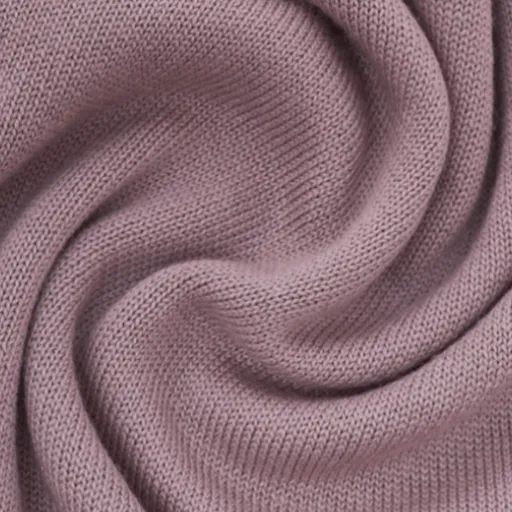
What is Acrylic Fabric?
Acrylic fabric belongs to the category of synthetic textiles and it is made from a polymer called acrylonitrile that is usually derived from petroleum or natural gas. Its features have been kept designed to look like those of wool but it is at the same time, a very light, durable, and non-damaging product for the customers, as it will not fade or wrinkle easily. The credit of retaining vivid acrylic colors for a long period of time goes to the producer. That is why it has become a common choice for such types of products as upholstery, clothing, and even outdoor gear.
One of the most remarkable features of acrylic fabric is its heat and softness which are quite close to those of natural wool. Thanks to the insulating property, it is mostly used in cold-weather clothing such as sweaters, scarves, and gloves. Moreover, because of the moisture-wicking abilities of acrylic, it becomes the best choice for items that require to be mold-proof like outdoor furniture coverings and blankets.
Acrylic literally offers the easiest care, as it is usually resistant to shrinking and staining which adds to its convenience for everyday use. However, it is less breathable than natural fibers and there is a possibility of static electricity generation. In spite of these slight drawbacks, acrylic continues to be a versatile and affordable solution for many areas of use especially where durability and looks are the major concerns.
What is Polyester Fabric?
Polyester is a man-made textile composed entirely of polymers derived from petroleum. It is one of the most frequently used fabrics worldwide with outstanding longevity and ability to serve many purposes as its main characteristics. Polyester is a strong and flexible fiber that does not shrink or stretch, thus it can be used in various applications such as clothing, home textiles, and industrial products.
Polyester Fabric has many benefits, and one of the most important is its resistance to wrinkles, quick-drying ability, and overall low maintenance. These features especially make polyester popular in the clothing industry, as it keeps its shape and look even after washing frequently. Also, it is light and can be mixed with other fibers like cotton to increase its comfort and usability.
The biggest drawback of polyester is that it does not breathe as well as the natural fibers, which means that it can trap the heat and the moisture next to the skin making it inconvenient for hot areas. Not to mention that its production requires non-renewable resources and it can also contribute to the pollution of the oceans with microplastics. Nevertheless, the developments in recycling technologies and sustainable production methods are paving the way for a gradual improvement in the environmental footprint of polyester.
Common Uses of Acrylic and Polyester
Acrylic and polyester are the two most common plastics that can be found in different shapes and forms throughout the world because of their qualities like versatility, durability, and low price.
Common Uses of Acrylic:
Apparel Manufacturing:
Acrylic is commonly used in the textile and clothing industry for making soft, warm, and wool-like sweaters, socks, and gloves. It is a popular choice for winter wear since it provides insulation and retains heat very well.
Home Furnishings:
The carpets, rugs, and upholstery fabrics made from acrylic fibers are common in homes. Their stain and fading resistance makes them a good choice for household items.
Outdoor Applications:
Acrylic is a weather-resistant, UV-light, and moisture-resistant material that is suitable for making outdoor awnings, canopies, and patio furniture.
Common Uses of Polyester:
Textile Industry:
Polyester is the primary fabric used in the textile sector and is found in the making of dresses, suits, jackets, and activewear. Its non-wrinkle property and strength make it a suitable option for everyday use.
Industrial Applications:
The high tensile strength of polyester makes it a key element in tire cords, conveyor belts, and safety belts production.
Home Décor:
It is often used for curtains, bed linens, and the stuffing of furniture due to its stain-resistant and quick-drying properties.
Bottling and Packaging:
A form of polyester called PET is a major material in making plastic bottles, food containers, and packaging solutions because of its lightweight yet sturdy property.
Key Differences Between Acrylic and Polyester
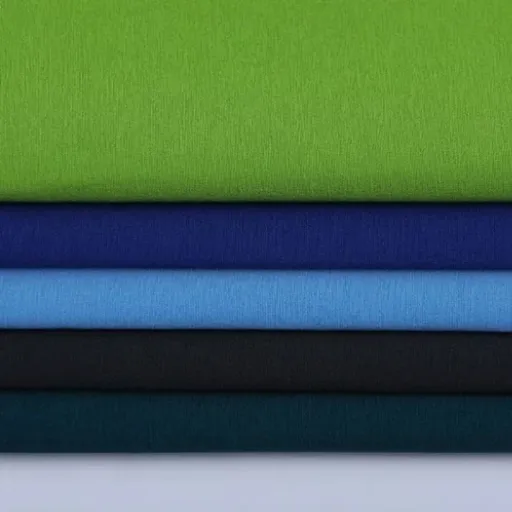
Durability and Longevity
When discussing durability and longevity, acrylic and polyester each have their unique strengths and weaknesses. Acrylic is the material that comes to mind for being light-weight and resistant to fading which is why it is a favorite choice for outdoor awnings and patio furniture. In spite of the fact that it is not very durable regarding heavy use and tear, it can still be used for a long time in such conditions as it is pilling or stretching that eventually happens, losing the desired strength in high-stress environments.
Polyester is very tough and has high tensile strength which gives it the ability to hold up to a lot of force without change. It is resistant to water, sun and abrasion thus making it applicable to various situations, from industrial to consumer, even in frequent washing or outdoor conditions—just like in the case of the ones that withstand sunlight exposure. Besides, the color and structure of polyester fabrics remain well throughout their time, which adds up to making them long-lasting materials.
Bottom Line: In the end, acrylic versus polyester is an depending on the needs of the application. Acrylic is the king of the castle when it comes to upkeeping lively colors and warding off weathering, while polyester is the one with the crown in terms of strength, resilience, and versatility. Grasping these points can help to find out which material is more appropriate for certain usages.
Tactile Feel and Comfort
Tactile feel is an important aspect that varies greatly between acrylic and polyester, and this is the main consideration depending on the intended use. The fabrics made of acrylic are substantially gentler and warmer to the touch thus being the most common choice for blankets, sweaters, and upholstery that focus on comfort. The plush feel of acrylic is crafted to copy the touch of natural fibers like wool, hence giving a nice and warm experience to the user.
On the contrary, polyester is colder and more artificial in its touch. Though it cannot compete with acrylic in terms of warmth and softness, polyester is still smoother and less likely to form pills, so it remains a popular choice for places where durability and easy cleaning are most important. Polyester materials are also very thin and their use is quite broad, while the producer’s efforts in developing the technology have been able to greatly comfort some types of the fabric.
Key Takeaway: So, it lies only in the application of one of these two materials that a decision about tactile comfort can be made. In case of heating and softness, acrylic is the winner. Nevertheless, if it is durability and the sleekness of texture that are given preference then polyester becomes the best. Weighing these factors along with the particular demands of the application can lead to the right material being picked for the need.
Cost-Effectiveness and Value
In the comparison of acrylic and polyester, the cost-effectiveness aspect is mainly a matter of the intended use and the compromise between the initial outlay and the long-term performance. Generally speaking, acrylic is more expensive than polyester having mostly to do with its manufacturing process and the combination of its properties, like being soft and good at retaining heat. So, if the application is about comfort and warmth, then acrylic will be the one giving higher value even if it costs more.
Conversely, polyester is usually less expensive and more readily available, thus it is a cost-effective choice. Its asset of being durable and resistant to stretching or shrinking coupled with its lifespan can eventually mean the cost of its replacement coming down over the years, and thereby, the value becoming greater in the long run. For applications where durability and cost-effectiveness are the main factors, polyester is usually the material of choice.
Decision Factor: In the end, both the upfront budget limitations and the desired material characteristics should be considered in the decision-making process. If warmth and softness are the conditions, then acrylic may well be worth its higher price. On the other hand, if it is strong use and price that are the factors then polyester will most probably be the solution that costs you the least. Careful weighing of these factors will land you the best value for your particular needs.
Performance Characteristics of Acrylic vs Polyester
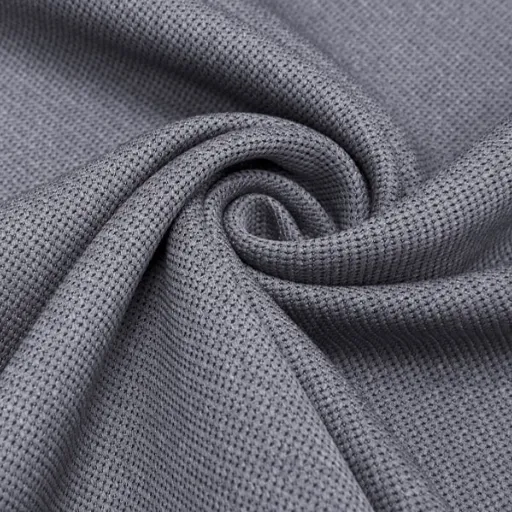
Resistance to Fading and Wear
Acrylic and polyester besides offering the different levels of resistance to fading and wear, overall, embracing different situations. Acrylic fibers have the upper hand in the case of UV light resistance and, therefore, are less likely to fade during direct sun exposure. Consequently, acrylic becomes the number one choice for outdoor applications or items that are often exposed to bright light. The ability to hold the color for a longer period of time also adds to its aesthetic appeal.
Polyester, in contrast, is extremely tough and resistant to the type of wear caused by rubbing and normal use. It has been characterized by its high strength, and it can even lose its character, and become more or less significant, after countless washings and heavy use. in fact, however, polyester has less fading resistance than acrylic when it is continuously exposed to UV light, which makes indoor use or applications with limited sunlight a better choice for polyester.
When the choice between acrylic and polyester is to be made, the usage environment of the material should be carefully considered. Acrylic fibers will have no rival in the fight against fading for items that are sunlit for long periods. On the other hand, for products that require high durability against wear and frequent usage, polyester’s strength and resistance to wear would be the ideal alternatives. Each of the two materials boasts unique advantages that satisfy particular requirements.
Water Absorption and Moisture Management
Acrylic and polyester are two very different materials in terms of water absorption and moisture management properties, which are the main reasons each material has its own specific applications. Acrylic fibers are hydrophobic, so their water absorption rate is extremely low. Consequently, this quality gives acrylic the properties of being quick-drying and mildew-resistant. Nonetheless, its ability to absorb moisture is limited which may cause discomfort, especially if the material has been in contact with moisture for a long time because it does not effectively pull sweat away from the skin.
Polyester, however, is also hydrophobic but it has availed itself of the modern breakthrough in fiber technology. The moisture-wicking capability of many polyester fabrics is designed to be enhanced, thus pulling sweat away from the skin and speeding up its evaporation. The moisture management function of polyester makes it very suitable for activewear and areas where dryness is an important factor.
When choosing between acrylic and polyester, you should take into account not only the application but also the environmental conditions. For clothing or items where it is of utmost importance to keep dry and comfortable, particularly in a highly active environment, then polyester with moisture-wicking technology would be the best pick. On the other hand, acrylic is perfect for environments where quick-drying and water-resistant characteristics are needed, for example, outdoor furniture or weather gear. Ultimately, the choice is about whether to prioritize quick-dry features or improved moisture management.
Hypoallergenic Properties
Hypoallergenic properties of the materials play an important role in furniture selection, thus, the basic rule is to use fibers that are specially made to cause no or little irritation and allergic reactions. Natural fibers, that is, cotton and bamboo, are the most popular among hypoallergenic materials because of their softness, lightness, and skin-friendliness. These are the most proper materials for people whose skin is delicate or who suffer from allergies because they are less capable of trapping dirt, mites, or other possible allergens thus providing a clean and safe environment for the sensitive ones.
On the other hand, synthetic materials like polyesters, or microfibers can be hypoallergenic too but only if they are carefully treated. Some synthetic fabrics are even designed to be allergen-resistant, thus, they’re even friendly for the ones with breathing problems. But still, it is very important to check if such fabrics carry a label saying they are hypoallergenic and if so, they have passed the necessary quality tests for delicate skin.
When buying hypoallergenic products, other aspects like ease of cleaning and maintenance can be considered. For instance, materials that can be put in the washing machine at high temperatures may be more effective in preventing allergen accumulation as compared to ones that cannot be washed or are hand-washed only. By the way, giving preference to hypoallergenic properties will not only lead to better health but also to better overall daily comfort and quality, especially in the cases of allergy or skin sensitivity individuals.
Caring for Acrylic and Polyester Fabrics
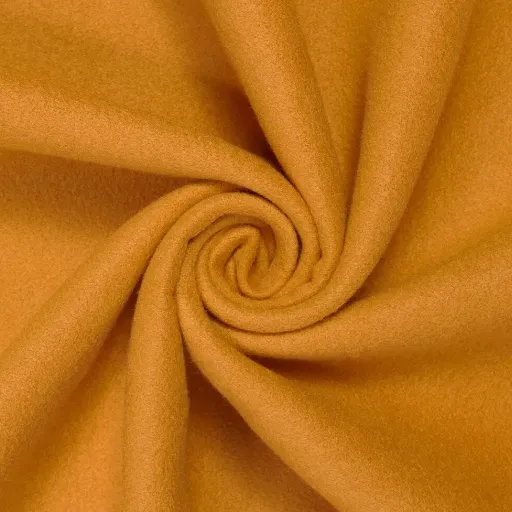
Washing and Maintenance Tips
Proper washing and drying practices are very important when taking care of acrylic and polyester fabrics. These two materials are very durable and are resistant to wrinkles which is why they are widely used in modern households. Here are some detailed tips from the experts that show how to take care of the fabrics:
- Washing Temperature: Acrylic and polyester fabrics can generally be washed in cold or warm water, with temperatures around 30°C to 40°C (86°F to 104°F) being ideal for most laundry cycles. Avoid using excessively hot water, as it can weaken fibers over time.
- Detergent Choice: Use a mild detergent to prevent buildup or damage to the fibers. For heavily soiled clothes, pre-treat stains with a gentle stain remover, but test for colorfastness in an inconspicuous area first.
- Machine Settings: Opt for a gentle or delicate cycle to protect the fabric structure. For mixed loads, consider washing with like-colors to minimize any abrasion or dye transfer.
- Drying: Air drying is the best choice for prolonging the lifespan of synthetic fabrics. Lay items flat or hang them to dry in a well-ventilated area. If using a dryer, select low heat or tumble dry settings to prevent shrinkage or heat damage.
- Fabric Softener Use: Polyester, in particular, tends to build up static electricity. Adding a small amount of fabric softener during the rinse cycle can reduce static cling and make fabrics more comfortable to wear.
- Ironing: Both polyester and acrylic are heat-sensitive, so avoid using high-temperature settings on your iron. Instead, use a low-heat setting and consider placing a cloth between the iron and the garment.
Drying and Ironing Considerations
Drying polyester and acrylic fabrics, the low-heat setting on the dryer is the most suitable option. Synthetic fibers may warp at high temperatures, thus resulting in the shrinkage or distortion of the garment’s silhouette. However, if the items are removed from the dryer when they are still slightly damp and then air dried, the maximum preservation will be achieved.
Ironing, on the other hand, calls for extra caution in order to avoid ruining the delicate fibers. Always initiate the process at a low heat or synthetic-friendly temperature. Also, for added protection, put a pressing cloth (a lightweight cotton towel or a plain sheet) between the iron and the garment. This protective layer helps to a great extent in preventing either scorching or melting the fibers through direct heat.
Alternatively, if the garments are hard to iron or they crease easily, then a handheld steamer can be used as an effective choice. The steam will help to relax the fibers without the risk of too much heat, thus keeping the fabric’s integrity while nicely finishing. Always make sure to store the garments properly after ironing or steaming to avoid wrinkling.
Storage Recommendations
The garments’ proper storage is very important that way they will be of quality for a longer time. Always store items in a clean, dry, and well-ventilated space to prevent the growth of mold or mildew. Make sure clothing is freshly washed or cleaned at the time of storing to avoid attracting pests like moths. Items made of delicate fabrics should be protected by being kept in breathable garment bags that will also allow airflow.
When folding garments like sweaters or knitwear use, between the layers, acid-free tissue paper to reduce creasing and safeguard the delicate fibers. Store heavier items at the bottom of the stacks and lighter ones on top so that there will be no unnecessary pressure that might distort the fabric over the years. Avoid using plastic bags for long-term storage because they can trap moisture and lead to discoloration or damage.
For hanging garments, use padded or wooden hangers to maintain the shape of coats, dresses, or jackets. Ensure that there is ample space between hanging items to prevent crowding which might lead to wrinkles or fabric deformation. If storing in drawers, consider using drawer liners or sachets infused with natural repellents (like lavender) to keep pests at bay while leaving a pleasant scent. Regularly check your stored clothing for signs of damage and address issues promptly.
Choosing Between Acrylic and Polyester
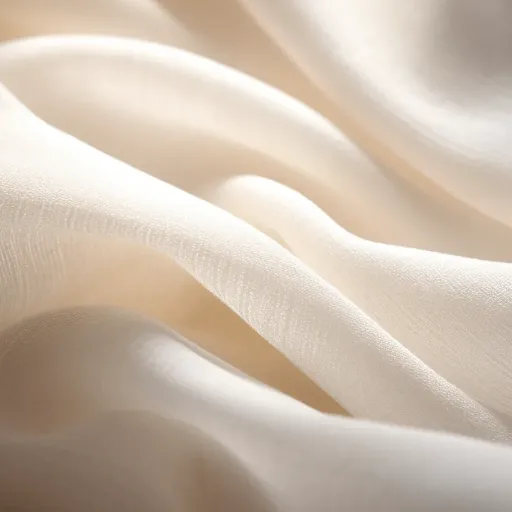
When to Choose Acrylic Over Polyester
Acrylic is a perfect choice over polyester when heat and gentleness are of utmost importance. While acrylic fibers were made to emulate the natural wool feel, they are perfect for sweaters, scarves, and blankets, among others. They are the best insulators, enabling heat to be locked in and providing comfort in cold climates. Acrylic, in contrast, gives a snug feeling that is more pleasant for the skin than polyester’s smoothness.
Another factor that makes acrylic a better option is its beautiful and durable color. The ability of acrylic fibers to absorb dyes is so great that they produce colors that are not only bright but also less subject to fading as compared to those made from polyester. This gives acrylic an edge over polyester in making vibrantly colored and patterned fashions or home décor. Besides, in most cases, acrylic still can repel the formation of pills, thus, maintaining a neat look for longer.
In the end, one of the main reasons people go for acrylic is its lightness. Acrylic fabrics, even though they are warm, are still light and can be worn easily without the heavy feeling. Polyester might be the better option when it comes to the long-term durability factor, but the combination of warmth, softness, and aesthetic appeal makes acrylic in some specific applications the winner, especially when it comes to cold-weather clothing and accessories.
When to opt for Polyester Fabric
In case durability and wear and tear resistance are major concerns, then going for polyester fabric would be a great solution. This synthetic fiber is very durable and, therefore, can be used in making fabrics for the items with frequent use or harsh conditions. It is resistant to stretching, shrinking, and wrinkling, which leads to the fact that it will keep the same shape and look during the whole period of its use. Polyester is a trustworthy and lengthy option if you are looking for clothes or textiles for active lifestyles or tough surroundings of people and animals.
One more positive thing about polyester is that it can resist moisture, and at the same time, it has the trait of quick drying. This peculiarity of the fabric makes it perfect for the outdoor gear, sportswear, and rainproof dresses. Polyester acts like a sponge that takes the moisture away from the skin so that the person does not feel hot and sweaty even in the times of hardest physical exertions or in the dampest conditions. To top that, since a hydrophobic surface ejects water of just light exposure easily, the water may not be a problem at all in using the fabric in various situations.
Polyester is a versatile fabric if easy maintenance is a very important factor. It can go into the washing machine, it is quick to dry, and it is less susceptible to color fading or being stained when compared to some natural fabrics. Its resistance to daily wear and its relatively low maintenance make it a good fabric for home textiles, from the upholstery of furniture to curtains. When the combination of functional resilience, cost-effectiveness, and easy care comes together, polyester most commonly becomes the fabric of choice for many applications, both in clothing and in home products.
Conclusion: Making an Informed Decision
The weighing of the major benefits and limitations of polyester is necessary when choosing polyester as the correct fabric for your needs. Durability, resistance to wrinkles, and easy maintenance are among the qualities that make polyester very popular and, therefore a versatile fabric for different uses. These attributes are very attractive for people who want easy and practical solutions.
On the other hand, polyester does not come without disadvantages. The material being synthetic it cannot provide the same level of breathability as the natural fibers which might affect the comfort level during hot and humid conditions. To add to this, there is always the environmental aspect to consider, that is, the synthetic material is made from nonrenewable resources and its decomposition duration is quite long. To those who are concerned about the sustainability aspects, it could be worthwhile to look into recycled polyester options or natural fiber alternatives being made.
It is therefore, a matter of personal needs, requirements and priorities for the decision to be made whether or not to use polyester. If your top priority is a long-lasting, affordable, and easy-care fabric then polyester is still a trustworthy option. However, for those whose top priority is comfort or environmental friendliness, then thinking through how to balance these qualities with polyester’s must make sure that an informed and thoughtful decision is made.
Frequently Asked Questions (FAQ)
Q: What are the main differences between acrylic and polyester fabric?
A: Acrylic and polyester fabrics mainly vary in their purity and characteristics. Acrylic comprises synthetic fibers that are close to natural fibers such as cotton in softness, thus, it is usually softer. Polyester, in contrast, is composed of polyethylene terephthalate and its main characteristics are durability and resistance to wrinkles and shrinking.
Q: Which fabric is better for outdoor use, acrylic or polyester?
A: Trade-offs come into play when choosing the best fabric for outdoor use, and polyester is still considered a superior option for its durability and ability to resist fading and moisture. Acrylic is softer and provides warmth, thus, it is appropriate for some outdoor clothing, but it cannot handle bad weather as good as polyester.
Q: Is acrylic yarn better than polyester yarn for knitting?
A: The preference between acrylic yarn and polyester yarn is project-dependent. Acrylic yarn is usually softer and more pleasant for the skin, thus, it is perfect for baby toys, blankets, or clothing. Polyester yarn, on the other hand, is more robust and less prone to losing its character and this quality might be useful in the case of sportswear or items that are washed often.
Q: How does the warmth of acrylic compare to polyester?
A: Acrylic is frequently warmer compared to polyester, thus, giving it a place amongst the preferred choices for products such as blankets and winter clothing. The feel of acrylic in terms of softness and warmth gives an impression of rising; whereas, polyester comes closer to being breathable which might be an advantage in hotter conditions.
Q: Are there any disadvantages of acrylic fabric?
A: Acrylic fabric has one main disadvantage that it can get matted up with tiny balls of fluff, called pilling, over time and this is especially true if the fabric is used frequently. Also, acrylic does not have the durability that polyester possesses—especially for outdoor fabrics—although acrylic is non-irritating and warm.
Q: Can you use acrylic for outdoor clothing?
A: It is possible to use acrylic for outdoor clothing, but it depends on the specific demands of the activity in question. For instance, acrylic can be used for light outdoor wear when warmth is the main criterion, but if the outdoor activity involves harsh weather conditions, then polyester is often more suitable for its durability and moisture-wicking qualities.
Q: What are the advantages of choosing acrylic over polyester?
A: One major advantage of acrylic is that it is not only nice to wear due to its softness but also it provides warmth. Moreover, the weight of acrylic fabrics is lower, and they could be less costly than polyester. This makes acrylic a possible choice for items like comfy blankets or informal wear.
Q: Which fabric is more suitable for athletic wear, acrylic or polyester?
A: When it comes to athletic wear, polyester is more suitable because of its moisture-wicking qualities and durability. For instance, polyester is often invested in performance fabrics that are designed for intense physical activity. Although acrylic is comfortable, it still does not offer the same level of performance in athletic applications.
Q: How does the softness of acrylic compare to polyester?
A: Acrylic is noted for being very soft and the plushness it has makes it a desirable option for clothing and blankets. Conversely, polyester is also soft but it might not have the same level of comfort, particularly in cold weather when warmth is top priority.
Q: What is the best way to care for acrylic and polyester fabrics?
A: It is better to care for acrylic fabrics by washing them in cold water on a gentle machine cycle and avoiding drying at high heat so as not to damage them. Polyester fabrics can also be washed in the machine but can withstand higher temperatures. Always refer to the care labels for specific instructions to keep the fabric in good condition.
References
-
Two Common Fabrics, Acrylic Vs Polyester – A detailed comparison of the properties, uses, and differences between acrylic and polyester fabrics.
-
Understanding the Key Differences Between Polyester and Acrylic – Explains the warmth, insulation, and other characteristics of both fabrics.
-
What material is better to wear: acrylic or polyester? – Discusses the protective capacities and suitability of each fabric for different conditions.
-
What material is better to wear: acrylic or polyester? – A Quora discussion highlighting the applications and characteristics of both materials.
-
Acrylic vs. Polyester Marine Grade: What You Need to Know – Focuses on the performance of acrylic and polyester in marine-grade applications, including UV resistance and durability.









